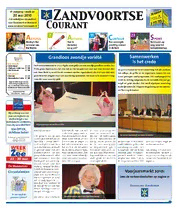
Extraterrestrial Altruism: Evolution and Ethics in the Cosmos PDF
Preview Extraterrestrial Altruism: Evolution and Ethics in the Cosmos
T H E F R O N T I E R S C O L L E C T I O N Douglas A. Vakoch (Ed.) E XTR ATER R ESTR I A L A LTRU ISM Evolution and Ethics in the Cosmos THE FRONTIERS COLLECTION Series Editors Avshalom C. Elitzur Unit of Interdisciplinary Studies, Bar-Ilan University, 52900, Ramat-Gan, Israel e-mail: avshalom.elitzur@weizmann.ac.il Laura Mersini-Houghton DepartmentofPhysics,UniversityofNorthCarolina,ChapelHill,NC27599-3255, USA e-mail:mersini@physics.unc.edu MaximilianSchlosshauer DepartmentofPhysics,UniversityofPortland,5000NorthWillametteBoulevard, Portland,OR97203,USA e-mail:schlossh@up.edu MarkP.Silverman DepartmentofPhysics,TrinityCollege,Hartford,CT06106,USA e-mail:mark.silverman@trincoll.edu JackA.Tuszynski DepartmentofPhysics,UniversityofAlberta,Edmonton,ABT6G1Z2,Canada e-mail:jtus@phys.ualberta.ca RudyVaas CenterforPhilosophyandFoundationsofScience,UniversityofGiessen,35394 Giessen,Germany e-mail:ruediger.vaas@t-online.de H.DieterZeh GaibergerStraße38,69151Waldhilsbach,Germany e-mail:zeh@uni-heidelberg.de For furthervolumes: http://www.springer.com/series/5342 THE FRONTIERS COLLECTION Series Editors A. C. Elitzur L. Mersini-Houghton M. Schlosshauer M. P. Silverman J. A. Tuszynski R. Vaas H. D. Zeh The books in this collection are devoted to challenging and open problems at the forefrontofmodernscience,includingrelatedphilosophicaldebates.Incontrastto typical research monographs, however, they strive to present their topics in a manner accessible also to scientifically literate non-specialists wishing to gain insightintothedeeperimplicationsandfascinatingquestionsinvolved.Takenasa whole,theseriesreflectstheneedforafundamentalandinterdisciplinaryapproach tomodernscience.Furthermore,itisintendedtoencourageactivescientistsinall areas toponderoverimportant andperhapscontroversialissuesbeyondtheirown speciality. Extending from quantum physics and relativity to entropy, conscious- ness and complex systems—the Frontiers Collection will inspire readers to push back the frontiers of their own knowledge. Forafulllistofpublishedtitles,pleaseseebackofbookorspringer.com/series/5342 Douglas A. Vakoch Editor EXTRATERRESTRIAL ALTRUISM Evolution and Ethics in the Cosmos 123 Editor Douglas A.Vakoch SETIInstitute Mountain View, CA USA ISSN 1612-3018 ISBN 978-3-642-37749-5 ISBN 978-3-642-37750-1 (eBook) DOI 10.1007/978-3-642-37750-1 SpringerHeidelbergNewYorkDordrechtLondon LibraryofCongressControlNumber:2013940087 (cid:2)Springer-VerlagBerlinHeidelberg2014 Thisworkissubjecttocopyright.AllrightsarereservedbythePublisher,whetherthewholeorpartof the material is concerned, specifically the rights of translation, reprinting, reuse of illustrations, recitation,broadcasting,reproductiononmicrofilmsorinanyotherphysicalway,andtransmissionor informationstorageandretrieval,electronicadaptation,computersoftware,orbysimilarordissimilar methodology now known or hereafter developed. Exempted from this legal reservation are brief excerpts in connection with reviews or scholarly analysis or material supplied specifically for the purposeofbeingenteredandexecutedonacomputersystem,forexclusiveusebythepurchaserofthe work. Duplication of this publication or parts thereof is permitted only under the provisions of theCopyright Law of the Publisher’s location, in its current version, and permission for use must always be obtained from Springer. Permissions for use may be obtained through RightsLink at the CopyrightClearanceCenter.ViolationsareliabletoprosecutionundertherespectiveCopyrightLaw. The use of general descriptive names, registered names, trademarks, service marks, etc. in this publicationdoesnotimply,evenintheabsenceofaspecificstatement,thatsuchnamesareexempt fromtherelevantprotectivelawsandregulationsandthereforefreeforgeneraluse. While the advice and information in this book are believed to be true and accurate at the date of publication,neithertheauthorsnortheeditorsnorthepublishercanacceptanylegalresponsibilityfor anyerrorsoromissionsthatmaybemade.Thepublishermakesnowarranty,expressorimplied,with respecttothematerialcontainedherein. Coverfigurecredit:Thiscoverusesamotiffrom‘‘TheArecibomessageassent1974fromtheArecibo Observatory,’’ Arne Nordmann (2005), from Wikimedia Commons, licensed under the Creative CommonsAttribution-ShareAlike3.0Unportedlicense. Printedonacid-freepaper SpringerispartofSpringerScience+BusinessMedia(www.springer.com) To Gerry Harp, for innovative leadership in the Search for Extraterrestrial Intelligence Foreword Extraterrestrial altruism. What can be said about it? Is it important in any way beyondbeingagoodexerciseforourlogicalabilities,andtoexciteourcuriosity? Mostpeoplewouldanswer,off-hand,thattheanswerstothesequestionsare‘‘very little’’ and just plain ‘‘no.’’ The readers of this book may come away with sur- prisingly revised and positive answers to these questions! Withregardtowhatcanbesaidaboutextraterrestrialaltruism,weareseriously inhibited by having no information whatsoever about the nature, cultures, and histories of any actual extraterrestrial beings, either non-intelligent or intelligent. To arrive at some ideas about the possible existence and abundance of extrater- restrialaltruism,wecan,fornow,dependonlyonknowledgeoftheoneintelligent, altruistic, species we know of, ourselves. An example of one! In science, it is alwaysverydangerousandevenprobablyfallacioustodevelopconclusions,based on a sample of one, about anything complicated. This is not the case in reaching understandings of many matters related to extraterrestrial life, such as the origins of life, the nature and evolution of planets, and the possible chemistry on other worlds.Wehaveplentyofdatafromtheplanetsofourownsolarsystemtoguide us in those studies. But with regard to altruism in an extraterrestrial intelligent species, there is just the one example, us, on which to depend. Of course, we do have many examples on Earth of altruism in complex crea- tures other than ourselves—for example, in the marine mammals, and in many terrestrial animals, such as the wolves, the simians, and the birds. Indeed, in the milieu of the higher complex animals, altruism is ubiquitous. Think of the pen- guinsshelteringtheiryounginthebrutalAntarcticwinter,orthemotherbirdwho fights off predatory birds to bring food to her chicks. Indeed, the ubiquity of altruism in terrestrial animals is so extensive that it would appear to support strongly the idea, discussed later in this book, that altruism is not a choice, or an accident, or even a vanity, as it is sometimes with humans, but is of Darwinian origin.Itworksverywelltoenhancesurvival.Ifevolutionhasdiscoveredaltruism sowidelyasanimportantcontributortosurvivalonEarth,mightitnotbesimilarly widespread on other worlds? As an aside to this thought, as an astronomer I would point out that the driver that causes altruism to flourish is one that is somewhere between trivial and profound. It is that all planets large enough to support life are round (well, or vii viii Foreword almost round)! Planets that are most suitable for life as we know it must be massiveenoughtohaveagravitationalfieldstrongenoughtoretainanatmosphere and probably liquid water. A simple calculation based on Newton’s Law of Gravitation shows that the lowest energy state of the accumulated planetesimals thateventuallymergetobecomeaplanetisasphere.Ifthereisrotation,theshape will deviate slightly from being a sphere, as in the planet Jupiter. So planets are near spheres. Never something like a sheet of paper! The consequence of this is that there always will be a finite surface area, and therefore, importantly, finite resourcestonourishthegrowthandlivelihoodoflivingthings.Indeed,thesurface area of a sphere is the smallest surface area of a volume of any shape. Finite resources means there will be competition by living things for them, powering evolution, and in turn, at some point, altruism. This is explored in this book. Hopefully, despite our lack of extraterrestrial empirical evidence, we can use this model to make some credible progress in predicting the nature and extent of extraterrestrial altruism. Now, are there some benefits of importance to us that we can, with some credibility, predict will derive from extraterrestrial altruism? There are probably many possibilities. Here I will write about one kind that comes to my mind. It is guidance in the search for extraterrestrial intelligence, SETI. Success in such endeavors is a major goal in astrobiology, and altruism may play a major role in them. Indeed, the existence and conductof extraterrestrial altruism is becoming a centralissueinSETI,andmayplayacrucialroleinorganizingourSETIprograms for success. How does this come about? In planning SETI programs, the planners must make assumptions as to what detectable technology the ETs may be using. What might those technologies be? Here we are faced, again, with the problem of dealing with a statistic of one. We have only our technological history and capabilitiesforguidance.Historically,SETIprogramsonEarthhavelookedtothe status of contemporary technologies to point to the most promising search approaches. Fifty years ago the answer seemed to be to search for radio signals. Nothing else we were doing seemed reasonable as a detectable signal. The para- digm,basedonourhistory,wasthatradiosignalswouldremainamainsignofour (and their?) existence, andthat,indeed,thepowerofsuch signals wouldcontinue to increase as more powerful transmitters were developed. Then in recent years, thedevelopmentofveryhighpoweropticalandinfra-redlasershassuggestedthat, at least, we should search for signals at optical and infra-red wavelengths. Accordingly, we have added searches for such signals to our ‘‘classical’’ radio searches. We had a clear belief that signals at all electromagnetic wavelengths would forever be present and probably growing in intensity. We had no other examples to improve that belief. Now, only 50 years after the first scientific SETI programs, we see unforeseen changes in the paradigm taking place rapidly. The radio signals from Earth are rapidlybecomingfainterandmoredifficulttodetect.Theoncestrongestevidence of our existence, our traditional television transmitters, is fast being replaced by cable television and direct-to-home transmission of television and other media Foreword ix from orbiting satellites. The sensitivity of affordable signal receivers has improved, and signals are more efficiently transmitted using digital techniques. The result, for now, is that the one million watt power of traditional television transmitters is fast being replaced by cable television, which transmits no power into space, and the roughly 40 watt power of satellite-transmitted television, almost all of which power does not go into the extraterrestrial space. The exact numbersarenotimportantofcourse;therealpointisthatthepowerlevelstospace are decreasing by enormous amounts. Similar reductions, but not so dramatic, in thepowerreleasedtospacebyothermeans,particularlybythemilitary,aretaking place. It seems obvious that within a very short time on the cosmic timescale, perhaps only decades, the ‘‘brightness’’ of our civilization will be reduced by a huge factor. The great bulk of the electromagnetic transmissions of human civi- lization are fast fading to black! Not long from now the remaining signs of our existencemaybethelightsofcitiesatnight,andatinterstellardistancestheseare very hard to detect. We have no technology that can come close to making such detections.Ofcourse,thecitylightsthatarevisiblefromspacearewastedlight,a consequence ofinefficient light fixtures. They are,toastronomers, light pollution. AlreadyonEarththereareeffortstodeveloplightfixturesthatwillnotwastelight in this way, and at optical wavelengths, too, we will fade to black. All of this adds up to bad news for SETI, and for our chances of learning of othercivilizations,andbeingenrichedbythefloodofusefulinformationwemight well obtain from other civilizations. Our old paradigm was probably very wrong. We need some realistic new thinking. It is plausible that other civilizations have traced this same history in their technology development. They, like us, have seen their visibility grow fantasti- cally,butthen,inashorttimeonthecosmictimescale,decreaseasaresultoftheir own growing expertise. They will be curious as we are, and will know that new, young,civilizationslikeoursareoutthereinspace,searchinganddreamingaswe do. They will know that those civilizations have been confronted with the same eventual sobering recognition that intelligent civilizations may be very hard to find. This is where altruism moves to center stage. Will they practice altruism, and expend some resources to make themselves detectable? Maybe through electro- magnetic signals of great power? Is this the crucial step that will allow civiliza- tionstoshareinformation, after all? We have tried tothink ofalternativestothis, but know of none. If this is the case, we need to change our search strategies. The altruistic beacons of other worlds may come not from the planets of nearby stars, but from rare altruistic systems far away. It is a fact, rarely emphasized, that most of the brightest stars in the sky are not nearby, but are intrinsically very bright very distantstars.Thesameistrueofcosmicradiosources.Ifaltruismismotivatingthe technologychoicesforinterstellarcommunication,thesamecouldbetrueofsigns of intelligent life. We should search for signals that are designed to be easily detectableatgreatdistances.Wealreadydothis.Weshouldsearchwherewecan test as many stars as possible at once for the presence of signals. It could well be x Foreword thatthefirstcivilizationwedetectwillbehostedbyastarthatisnotinanycatalog, or not even visible. The nature and abundance of extraterrestrial altruism is not just an interesting and challenging exercise in logic; it may be very important to the discovery and understanding of extraterrestrial civilizations. This book will serve as the first major step inmakingprogress withthese questions, whose answersmay beoffar more importance than we might have imagined. Mountain View, CA, USA Frank Drake SETI Institute fdrake@seti.org
Description:The list of books you might like

The 5 Second Rule: Transform your Life, Work, and Confidence with Everyday Courage

The 48 Laws of Power

Can’t Hurt Me: Master Your Mind and Defy the Odds

Do Epic Shit

Demographic & economic information for Cascade County

Pragmatics of Natural Languages

Crime Scene Investigation

Knowledge and employability : social studies grades 8 and 9

California Garden, Vol. 97, No.3, May-June 2006

Mass Appeal Magazine 38

RIHS Watchtower 2006

Maryville College Catalog 2006-2008

Your Turn Answer Key - Houghton Mifflin Harcourt

Right off the Bat by William F Kirk

BVCM002573 M-30

Taxis Equations for Amoeboid Cells

New records and host plants of fly-speck fungi from Panama

DTIC ADA550999: Comment on The Two-Capacitor Problem Revisited: A Mechanical Harmonic Oscillator Approach






